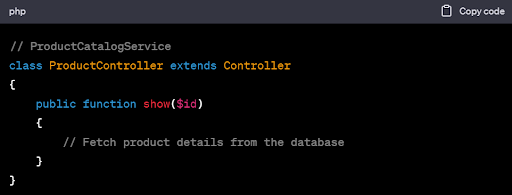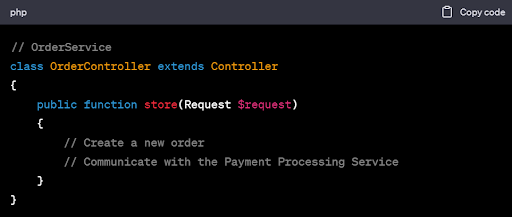Microservices architecture has become a buzzword in modern software development, offering a scalable and maintainable approach to building applications. In this blog post, we’ll explore what microservices are, their advantages, and how to implement them in a Laravel application, complete with examples.
Understanding Microservices in Laravel:
Microservices is an architectural style where a complex application is divided into a set of smaller, loosely coupled services. Each service is dedicated to a particular business function and interacts with other services via clearly defined APIs.
In a Laravel context, this means breaking down a monolithic Laravel application into smaller, self-contained services that can be developed, deployed, and scaled independently.
Advantages of Microservices in Laravel
- Scalability: Microservices can be scaled separately, allowing you to allocate resources efficiently.
- Maintainability: Smaller codebases are easier to manage, making it simpler to add new features or fix issues.
- Technology Stack Freedom: Each service can use its preferred technology stack, enabling you to choose the best tools for specific tasks.
- Fault Isolation: The failure of a single service does not necessarily lead to the entire application’s collapse. Failures are isolated, and services can be designed for resilience.
Implementing Microservices in Laravel
Let’s walk through how you can implement microservices in Laravel using a simple e-commerce example.
- Service Separation: Identify the core functionalities of your e-commerce application. In a typical e-commerce system, you might have services for User Management, Product Catalog, Order Management, and Payment Processing.
- API Gateway: Implement an API Gateway using Laravel’s built-in routing capabilities. The API Gateway is the entry point for external requests and routes them to the appropriate microservices. Here’s a simple example usingLaravel’sroutes:
- Microservices Development: Create separate Laravel projects for each microservice. Each service should have its database and business logic. Here’s an example of theProduct Catalog Service:
- Communication: Microservices require a way to communicate with each other. In this example, you can use HTTP RESTful APIs for inter-service communication. Laravel offers robust support for constructing APIs.
- Containerization and Orchestration: Use Docker and Kubernetes to containerize and orchestrate your microservices. These tools streamline the processes of deployment, scalability, and administration.
- Data Management: Decide how data will be shared or synchronized between microservices. You can use API calls or implement event-driven architectures for real-time updates.
- Monitoring and Observability: Implement comprehensive monitoring and logging to ensure you can detect and troubleshoot issues across your microservices architecture. Tools like Prometheus and Grafana can be helpful.
- Security: Implement proper authentication and authorization mechanisms to protect your microservices. Laravel’s built-in features, like Passport, can help secure your APIs.



Challenges and Considerations
Although microservices offer numerous advantages, they also come with challenges:
- Complexity: Microservices can introduce complexity, especially in terms of deployment and monitoring.
- Data Consistency: Ensuring data consistency across microservices can be challenging. Use strategies like eventual consistency when needed.
- Testing: Comprehensive testing is essential to verify the interactions between microservices.
- Operational Overhead: Managing numerous microservices can increase operational overhead. Consider using tools like Kubernetes for easier management.
In conclusion, adopting microservices in Laravel involves breaking down a monolithic application into smaller, independent services that communicate through APIs. While there are challenges, the benefits of scalability, maintainability, and technology stack freedom make it an attractive architecture for modern applications. Start small, plan carefully, and gradually migrate to a microservices architecture to reap the rewards of this approach in your Laravel project.




